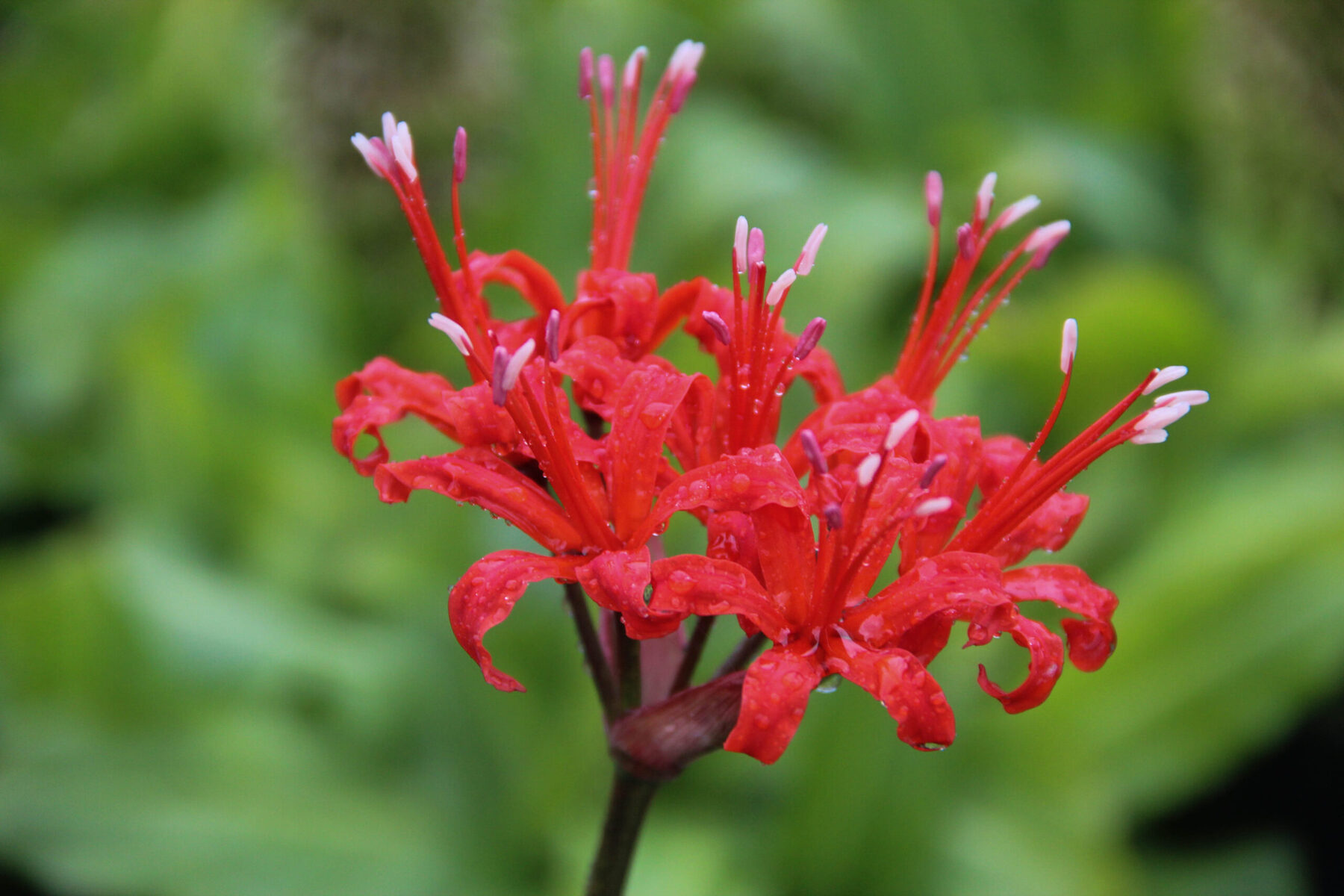
Are you ready to dive into the fascinating world of Nerine? Brace yourself for a captivating journey as we uncover 14 unbelievable facts about this enchanting plant. Nerine, also known as the Spider Lily, is a genus of flowering plants that belong to the Amaryllidaceae family. With their delicate blooms and unique characteristics, Nerine plants have captured the attention of botanists and gardening enthusiasts alike. From their origins in South Africa to their mesmerizing array of vibrant colors, Nerine is a true marvel of nature. So, let’s embark on this botanical adventure and discover some mind-blowing facts that will surely leave you in awe.
Key Takeaways:
- Nerine, also known as the Guernsey Lily or the Jersey Lily, is a stunning flower native to South Africa. It blooms in autumn, symbolizes love, and attracts pollinators, making it a resilient and beautiful addition to any garden.
- With its vibrant colors and long-lasting blooms, Nerine is a low-maintenance flower that thrives in well-drained soil and requires adequate sunlight. It symbolizes strength and resilience, making it a perfect choice for floral arrangements and gardens.
A Flower with Many Names
Nerine, also known as the Guernsey Lily or the Jersey Lily, is a stunning flower that captivates with its vibrant colors and delicate petals.
Native to South Africa
This beautiful flower is native to South Africa, where it thrives in the warm and sunny climate of the region.
Late Bloomer
Nerine is known for its late blooming nature. While most flowers bloom in the spring or summer, Nerine waits until the autumn to display its breathtaking beauty.
A Symbol of Love
In the language of flowers, Nerine symbolizes love and affection. It is often given as a gift to express deep emotions and admiration.
Variety of Colors
Nerine comes in a wide array of colors, including vibrant shades of pink, red, orange, and white. Each color variation exudes its own unique charm and elegance.
Drought Tolerant
One of the remarkable features of Nerine is its ability to withstand drought conditions. This makes it an ideal choice for gardens and landscapes in arid climates.
Belongs to the Amaryllis Family
Nerine is a part of the Amaryllis family, which includes other popular flowers like the Amaryllis and the Belladonna Lily. All of these flowers share similar characteristics and beauty.
Thrives in Well-Drained Soil
In order to flourish, Nerine requires well-drained soil that is rich in organic matter. This ensures that the roots have proper aeration and access to essential nutrients.
Attracts Pollinators
The striking colors and sweet fragrance of Nerine attract various pollinators, including bees and butterflies. This helps in the pollination process and contributes to the ecosystem.
Medicinal Uses
Traditionally, certain parts of the Nerine plant have been used in herbal medicine. It is believed to have properties that can help with digestive issues and improve overall well-being.
Requires Adequate Sunlight
Nerine thrives in sunny locations and requires at least six hours of direct sunlight each day. This ensures that the plant receives the energy it needs to grow and bloom beautifully.
Long-Lasting Cut Flowers
Nerine flowers have a long vase life, making them a popular choice for floral arrangements and bouquets. They can brighten up any space and bring a touch of elegance.
Low Maintenance
For those with busy lifestyles, Nerine is a perfect choice as it is low maintenance. Once established, it requires minimal care and attention while still providing stunning blooms.
Symbolizes Strength
Nerine is often associated with strength and resilience. Its ability to bloom later in the year, endure harsh conditions, and still showcase its beauty reflects these admirable qualities.
These 14 Unbelievable Facts About Nerine shed light on the enchanting qualities of this remarkable flower. From its late blooming nature to its vibrant colors and symbolic meanings, Nerine continues to captivate and inspire. Whether used in floral arrangements, showcased in gardens, or admired in its natural habitat, Nerine is a true testament to the wonders of nature.
Conclusion
Nerine is truly a fascinating plant with its stunning beauty and unique characteristics. From its origins in South Africa to its vibrant colors and long blooming period, there is much to be amazed by. Whether you’re a plant enthusiast or simply appreciate the beauty of nature, incorporating Nerine into your garden or indoor space is a wonderful choice. Its ability to thrive in various climates, along with its low maintenance requirements, make it an ideal addition for both beginner and experienced gardeners. So, why not give Nerine a try and enjoy the enchanting allure it brings to your environment? With its delicate flowers and incredible endurance, Nerine is sure to captivate and delight for years to come.
FAQs
1. How do I care for Nerine?
It is important to provide Nerine with well-draining soil and ample sunlight. Water regularly during the growing season and reduce watering in the dormant period. Avoid overwatering as it can lead to root rot. Fertilize Nerine with a balanced plant food during the growing season to promote healthy growth.
2. Can Nerine be grown indoors?
Absolutely! While Nerine is often grown outdoors, it can also thrive indoors. Place it near a sunny window or provide supplemental grow lights to ensure it receives adequate sunlight. Be sure to rotate the pot occasionally to prevent the plant from leaning towards the light source.
3. How long do Nerine flowers typically last?
Nerine flowers have an impressive lifespan, typically lasting anywhere from three to four weeks. During this time, their vibrant colors and graceful petals create a stunning display that adds a touch of elegance to any space.
4. When is the best time to plant Nerine bulbs?
The ideal time to plant Nerine bulbs is in the spring or early summer. This allows the bulbs to establish themselves before the blooming period in the fall. Ensure that the soil temperature is consistently above 50°F (10°C) for optimal germination.
5. Can Nerine be divided?
Yes, Nerine can be divided to propagate new plants. This is typically done in late summer or early fall when the plant is dormant. Gently lift the bulbs from the soil, separate the offsets, and replant them in well-draining soil.
Nerine's enchanting beauty and fascinating characteristics have captivated flower enthusiasts worldwide. From its vibrant colors to its low-maintenance nature, this South African native continues to impress. If you found these facts about Nerine intriguing, wait until you learn about the alluring Guernsey Lily. This stunning bloom boasts its own set of remarkable traits that will leave you spellbound.
Was this page helpful?
Our commitment to delivering trustworthy and engaging content is at the heart of what we do. Each fact on our site is contributed by real users like you, bringing a wealth of diverse insights and information. To ensure the highest standards of accuracy and reliability, our dedicated editors meticulously review each submission. This process guarantees that the facts we share are not only fascinating but also credible. Trust in our commitment to quality and authenticity as you explore and learn with us.


